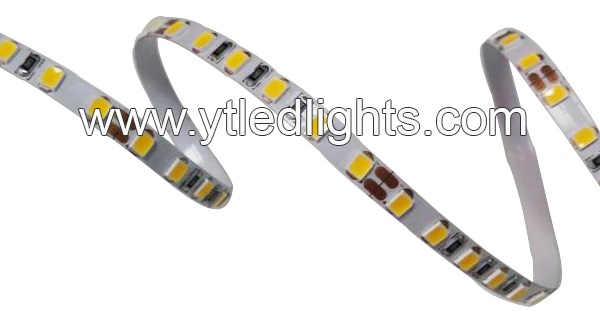
The illumination sector experienced a breakthrough with LED strip lighting since it delivers adaptable power-efficient solutions for residential and industrial applications as well as commercial settings. LED strip lights offer a contemporary design that enables endless use in multiple lighting situations. The versatile strips work as ambience setters as well as office enhancers while also acting as decorative elements. This paper investigates the multiple LED strip light varieties and outlines their functional benefits together with mounting approaches alongside their applications and service retention practices.
More about LED Strip Lights
The core components of LED strip lights include flexible circuit boards that integrate compact light-emitting diodes (LEDs) to create effective illumination. Multi-purpose LED strip lighting solutions exist in different dimensions and brightness strength ratings to fulfil numerous application needs.
Types of LED Strip Lights:
• RGB LED Strips: The multi-colour functionality of these strips depends on their Red, Green, and Blue LEDs, which users can manipulate through brightness and intensity adjustments. Through remote control and smart technology, users can adjust the lighting effects of these strips to fit their environment.
• RGBW LED Strips: The additional white LED chip in these strips enables users to change between colourful lighting and pure white brightness options. The combination of ambient and functional lighting makes these strips highly appropriate for such applications.
• Addressable LED Strips: Digital LED strips function as addressable LED strips to provide separate control of each LED. Users can make dynamic lighting effects by chasing patterns together with fading transitions and pulsing cycles.
• Waterproof LED Strips: Waterproof LED strips include protective coatings that enable resistance to water damage as they provide water protection for outdoor usage and applications in bathrooms and kitchens. The waterproof construction allows the strips to function resiliently at all times while resisting water damage in wet conditions.
How LED Strip Lights Outperform Traditional Lightings
The market favours LED strip lights because they provide better advantages than conventional lighting options.
• Longevity and Durability: Running at 50,000 hours of lifespan makes high-quality LED strip lights require replacement only rarely. LED strips maintain resistance against both shock and vibration effects, which traditional bulbs commonly experience.
• Energy Efficiency: LED strips minimise electricity consumption, giving you lower bills with their powerful illumination capabilities.
• Flexibility in Design: The main benefit of LED strip lights is their ability to conform to different shapes. Bookmakers can manipulate these lights by bending them along with cutting and shaping sections to meet different space requirements.
• Low Heat Emission: LED light strips maintain their cool temperature status even after extended operation times because of their distinct property compared to traditional bulbs, thus making these strips safe for multiple usage environments.
• Easy Installation and Control: The majority of LED strips include pre-applied adhesive, which provides users with straightforward mounting opportunities. The device operates under wireless control through smart home systems, such as mobile phone applications and remote controllers, for improved convenience.
• Eco-Friendly Lighting Solution: LED strips possess an eco-friendly character because they exist free of toxic mercury substances and maintain recyclability properties.
How to Install LED Strip Lights
The setup procedure for LED strip lights requires basic skills and simple tools.
• Choosing the Right Strip: The first step involves choosing the proper LED strip together with its brightness settings and colour temperature for the planned application.
• Measuring and Cutting: Use the installation area dimensions to determine cutting points for the LED strip in order to reach the desired output length.
• Surface Preparation: A clean, smooth surface that remains dry will optimise the adhesive bond of the LED strip during installation.
• Peeling and Sticking: Hold the LED strip by its backing before putting it onto the surface while maintaining continuous pressure that creates a strong bond.
• Connecting to Power: Connect the strip to a matching power adapter or controller which supports its voltage parameters.
• Testing and Adjustments: After enabling the LED stripe lamp, inspect it for any possible problems. Reposition the strip if needed to achieve the best possible coverage with the lighting.
Applications of LED Strip Lights
LED strips serve numerous installation needs because they function both for aesthetic improvement and functional enhancement.
• Home Lighting: Residential buildings utilize residential LED strips for decorative lighting purposes that include kitchen under-cabinet illumination and ceiling accent lighting along with furniture and artwork illumination.
• Commercial Spaces: Business spaces include retail stores together with dining establishments and workplaces which implement LED strip lights to generate welcoming ambiances and showcase structural features.
• Automotive Lighting: The automotive and motorcycling industries use LED strip bulb for lighting ambients as well as creating underflow effects and dashboard illumination.
• Outdoor and Landscape Lighting: Waterproof LED strips serve outdoor areas, including gardens, walkways, and patios, because they supply decorative effects while also providing safe illumination.
• Entertainment and Gaming Setups: The gaming and content production communities utilise LED strips to improve screen and desk visual appearance while enhancing their overall experience.
• Holiday and Event Décor: LED light strips introduce dynamic illumination that allows users to personalise how parties, weddings and festive decorations look more attractive.
Maintenance and Troubleshooting
LED strip lights receive excellent lasting capability and the best functionality through regular maintenance operations.
• Regular Cleaning: The brightness of the lights decreases over time due to dust accumulation along with debris; therefore, reviewers should execute regular cleansing sessions.
• Avoid Overheating: Using LED strips in confining spaces for extended periods may result in heat accumulation, although these lights generate minimal heat by nature. Extended lifespan requires sufficient ventilation of the area where LED lights are installed.
• Check Connections: Faulty or loose wiring will cause light flickering that ultimately results in faulty operation. Inspect all the wiring elements and connectors on a regular basis.
• Replace Faulty Sections: The replacement strategy for an LED strip lamp is to replace segments instead of the complete strip when individual segments suffer damage.
• Use Compatible Power Supply: The usage of an inappropriate power adapter will cause damage to LED strips. An inspection of voltage and power ratings must be performed prior to connecting.
• Store Properly When Not in Use: For long-term indefinite storage, fold the LED strips while keeping them neat before placing them in a dry container.
Conclusion
The modern lighting landscape benefits from LED strip lights, which provide both operational flexibility and energy-efficient operation while being aesthetically pleasing. LED strip lights serve all your lighting requirements, from working kitchen illumination to decorative party needs and comfortable workplace atmospheres. Homeowners alongside businesses draw toward LED strips because they are simple to install plus cost little to operate while accommodating numerous applications.








